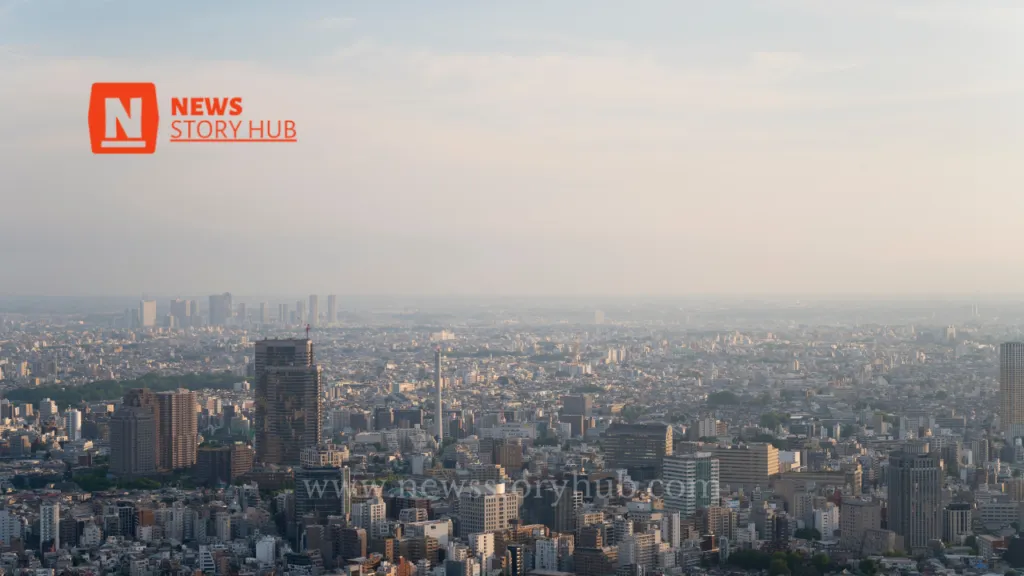Reason Behind Pollution in Delhi in Winter Season: Causes and Solutions

Introduction – Pollution in Delhi in Winter Season:
Pollution in Delhi in Winter Season: As winter blankets the vibrant city of Delhi with its chilly embrace, an unfortunate companion arrives with the season – heightened levels of pollution. The capital of India grapples with a surge in air pollutants, posing a significant threat to the health and well-being of its residents.
This annual ordeal stems from a combination of geographical, meteorological, and anthropogenic factors, culminating in a perfect storm of smog and haze that engulfs the cityscape. Understanding the intricacies of this issue is paramount in formulating effective strategies to combat it.
Delhi’s geographical makeup plays a pivotal role in the persistence of winter pollution. Nestled amidst the Aravalli Hills and the Shivalik range, the city finds itself ensconced in a natural basin. While this geographical embrace lends Delhi its scenic beauty, it also harbors an unintended consequence – it acts as a trap, ensnaring pollutants within the city limits.
The hills that encircle the city serve as silent sentinels, preventing the free dispersion of pollutants, exacerbating the problem. This topographical feature, while picturesque, gives rise to an environmental challenge that demands attention.
Further exacerbating the issue is the phenomenon of temperature inversion, a characteristic feature of winter nights and mornings. As the sun sets and temperatures drop, the air near the ground becomes cooler than the layers above. This atmospheric quirk leads to a peculiar stratification, wherein a layer of warm air forms above, trapping the denser, cooler air along with the pollutants below.
The result is a concentration of harmful substances perilously close to the ground, creating a toxic environment for Delhi’s populace. This meteorological phenomenon further compounds the challenges posed by the city’s geography, perpetuating the winter pollution crisis.
While nature sets the stage for this seasonal environmental predicament, human activities significantly contribute to its severity. One of the prominent contributors is the age-old practice of crop residue burning in neighboring states. After the harvest season, farmers resort to burning leftover crop residues, releasing a noxious mix of particles and gases into the air. These emissions, buoyed by the wind, find their way to Delhi, compounding the city’s pollution burden.
Additionally, the presence of numerous industries within Delhi’s boundaries and in the surrounding areas adds a substantial volume of pollutants to the mix. The release of particulate matter, sulfur dioxide, nitrogen oxides, and volatile organic compounds from these industrial sources contributes significantly to the pollution levels experienced during winter.
Causes of Winter Pollution in Delhi:
Geographical Constraints:
Delhi’s unique geographical location, surrounded by hills, acts as a natural trap for pollutants, preventing their easy dispersal.
Temperature Inversion:
During winter nights and mornings, cooler air near the ground gets trapped beneath a layer of warmer air above. This traps pollutants closer to the ground.
Stagnant Air:
Calm winds characteristic of winter lead to stagnant air, allowing pollutants to linger in the atmosphere for extended periods.
Crop Residue Burning:
Farmers in neighboring states resort to burning leftover crop residues after harvest. This releases particles and gases that can travel to Delhi.
Industrial Emissions:
The concentration of industries in Delhi and nearby areas leads to the release of various pollutants, including particulate matter and gases.
Vehicular Emissions:
A high number of vehicles, including older ones with outdated emission standards, contribute significantly to pollution levels.
Construction and Dust:
Construction activities and road dust add to pollution by releasing particulate matter into the air.
Biomass Burning:
The use of natural materials like wood for heating and cooking in both urban and rural areas contributes to pollution.
Festivals and Celebrations:
Fireworks and bonfires during festivities release additional pollutants into the air.
Solutions to Combat Winter Pollution in Delhi:
Promote Public Transportation:
Encourage the use of buses, metros, and other forms of public transport to reduce private vehicle emissions.
Improve Vehicle Emission Standards:
Enforce stringent emission norms and promote the adoption of cleaner, electric vehicles.
Implement Anti-Idling Policies:
Enforce no-idling zones, especially in high-traffic areas, to discourage unnecessary vehicle idling.
Upgrade Industrial Practices:
Encourage industries to adopt cleaner technologies and practices while enforcing stricter emission standards.
Regulate Construction Activities:
Implement dust control measures at construction sites to minimize the release of particulate matter.
Promote Green Spaces and Afforestation:
Increase the number of parks and green areas in the city and undertake afforestation efforts to absorb pollutants.
Manage Crop Residue Burning:
Provide incentives and support to farmers for adopting alternative methods of crop residue management, such as mulching and composting.
Promote Cleaner Cooking Practices:
Encourage the use of cleaner cooking fuels like LPG or electric stoves and provide subsidies for clean cooking technologies.
Conclusion:
Addressing winter pollution in Delhi is a complex task that requires coordinated efforts from various stakeholders. By implementing these solutions and advocating for comprehensive policies, we can work towards a cleaner and healthier environment for all. Remember, every small step counts in the fight against pollution.
Must read:-
Incredible Benefits of Strawberries From Heart Health to Glowing Skin | 2023
Tips Before Buying Best Gaming Laptop Under 60000
Blogging Kaise Kare in 2023?
How To Earn Money Online? | ऑनलाइन इनकम कैसे करें? | 7 Different Types
Decoding Difference Between Krill Oil and Fish Oil: Which is More Effective?
What Are The First Signs Of Kidney Damage From Alcohol | 5 Signs
Secrets of DMT Meditation: What Is DMT Meditation and How Does It Work?
Download Free PDF Book | Light on Yoga Book by B.K.S. Iyengar | 2023
Benefits of Cirkul Water Bottle for On-the-Go Hydration | 2023





